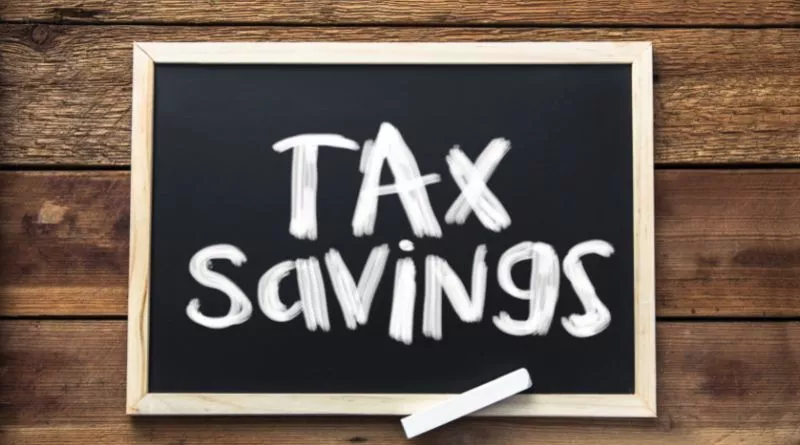As an investor, you want to maximize your returns on investment. However, taxes can take a significant chunk out of your investment gains.
That’s why it’s important to have a tax-saving strategy in place. In this guide, we’ll explore various ways to save money on taxes as an investor.
How to Save Money on Taxes?
Here are the steps that you can follow to save money on taxes:
Take Advantage of Tax-Advantaged Retirement Accounts
One of the best ways to save money on taxes as an investor is by contributing to tax-advantaged retirement accounts.
These accounts, such as 401(k)s and IRAs, offer tax benefits that can help you reduce your tax liability.

With a traditional 401(k) or IRA, you can contribute pre-tax dollars, which lowers your taxable income.
You won’t pay taxes on the contributions until you withdraw the money in retirement.
This allows your money to grow tax-free until you need it in retirement.
With a Roth 401(k) or IRA, you contribute after-tax dollars, but your withdrawals in retirement are tax-free.
This can be a good option if you expect to be in a higher tax bracket in retirement.
Maximizing your contributions to these accounts can significantly reduce your tax liability, so it’s important to take advantage of them if you can.
Use Tax-Loss Harvesting
Another way to save money on taxes is by using tax-loss harvesting. This involves selling investments that have lost value to offset capital gains on investments that have appreciated in value.

For example, let’s say you have two investments: Investment A has increased in value by $5,000, and Investment B has decreased in value by $3,000.
If you sell both investments, you would have a net gain of $2,000 ($5,000 – $3,000).
However, if you sell Investment B and hold onto Investment A, you can use the loss to offset the gain, resulting in no tax liability.
Tax-loss harvesting can be a valuable strategy, but it’s important to be mindful of the wash sale rule.
This rule prohibits you from selling a security at a loss and buying it back within 30 days to claim the loss.
Consider Tax-Efficient Investments
Investing in tax-efficient funds can also help you save money on taxes.
These funds are designed to minimize the tax consequences of investing by using strategies such as holding onto investments for longer periods to qualify for long-term capital gains rates or investing in municipal bonds, which are tax-free at the federal level.

You can also consider investing in exchange-traded funds (ETFs) or index funds, which typically have lower turnover rates and therefore generate fewer capital gains.
Be Mindful of Capital Gains Distributions
If you invest in mutual funds, it’s important to be mindful of capital gains distributions.
These occur when a mutual fund sells securities for a profit and distributes the gains to shareholders.
You may be responsible for paying taxes on these gains, even if you didn’t sell your shares.

To avoid unexpected tax liabilities, consider investing in mutual funds with low turnover rates or holding onto the funds for longer periods to reduce the chances of capital gains distributions.
Keep Good Records
Finally, it’s important to keep good records of your investments and related transactions.
This includes keeping track of purchase and sale dates, cost basis, and any dividends or distributions received.

Good record-keeping can help you accurately calculate your tax liability and avoid errors or penalties on your tax return.
Conclusion
There are various ways to save money on taxes as an investor.
By taking advantage of tax-advantaged retirement accounts, using tax-loss harvesting, investing in tax-efficient funds, being mindful of capital gains distributions, and keeping good records, you can minimize your tax liability and maximize your returns on investment.
If you need help developing a tax-saving strategy, consider consulting.
Frequently Asked Questions
Here are some most commonly asked questions about how to save money on taxes:
Q: What is tax-loss harvesting?
A: Tax-loss harvesting is the process of selling investments that have lost value to offset capital gains on investments that have appreciated in value. This can help reduce your tax liability by offsetting gains with losses.
Q: What is tax-advantaged retirement accounts?
A: Tax-advantaged retirement accounts are accounts that offer tax benefits to individuals who contribute to them. Examples include 401(k)s and IRAs, which allow you to contribute pre-tax dollars, and Roth 401(k)s and IRAs, which allow you to contribute after-tax dollars and withdraw the money tax-free in retirement.
Q: How can investing in tax-efficient funds save me money on taxes?
A: Tax-efficient funds are designed to minimize the tax consequences of investing by using strategies such as holding onto investments for longer periods to qualify for long-term capital gains rates or investing in municipal bonds, which are tax-free at the federal level. By investing in these funds, you can reduce your tax liability and maximize your returns on investment.
Q: What is the wash sale rule?
A: The wash sale rule prohibits you from selling a security at a loss and buying it back within 30 days to claim the loss. This is to prevent investors from artificially creating losses to offset gains for tax purposes.
Q: How can I minimize my tax liability on mutual funds?
A: To minimize your tax liability on mutual funds, you can invest in funds with low turnover rates or hold onto the funds for longer periods to reduce the chances of capital gains distributions. Keeping good records of your investments and related transactions can also help you accurately calculate your tax liability and avoid errors or penalties on your tax return.


